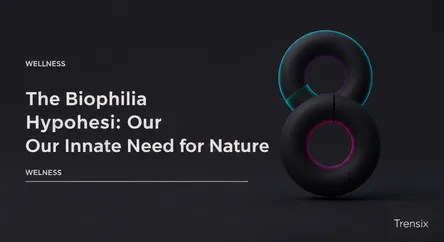Wellness
The Biophilia Hypothesis: Our Innate Need for Nature

Exploring the biophilia hypothesis—the idea that humans have an inherent urge to connect with nature—and its impact on our well-being and daily lives.
What is it?
The biophilia hypothesis suggests that humans possess an innate, genetically determined tendency to seek connections with nature and other forms of life. Popularized by American biologist Edward O. Wilson in his 1984 book "Biophilia," the concept proposes that our attraction to the natural world is rooted in our evolutionary history, where survival depended on a close relationship with the environment. This deep affiliation isn't just a preference but a fundamental part of our psychological and spiritual makeup, driving us to subconsciously connect with life and lifelike processes.
Why is it trending?
As modern life becomes increasingly urbanized and technologically driven, people spend more time indoors, detached from natural environments. This separation has sparked a renewed interest in biophilia as a remedy for the negative effects of our indoor existence. The concept is gaining significant traction in architecture and interior design through "biophilic design," which intentionally incorporates natural elements like plants, water, and daylight into buildings to improve well-being. Companies like Google and Amazon have embraced this to create healthier and more productive workspaces. There's also growing scientific evidence linking time in nature to improved mental and physical health, making biophilia a key topic in wellness and conservation circles.
How does it affect people?
Connecting with nature has measurable positive effects on human health. Research shows that exposure to natural environments can lower stress by reducing cortisol levels, decrease blood pressure, and improve mood. It enhances cognitive functions, boosting creativity, focus, and even short-term memory. For individuals, this means that simple activities like walking in a park, gardening, or having plants in a room can reduce anxiety and anger. In built environments like offices, schools, and hospitals, incorporating biophilic design elements has been linked to increased productivity, better academic performance, and faster recovery times for patients.